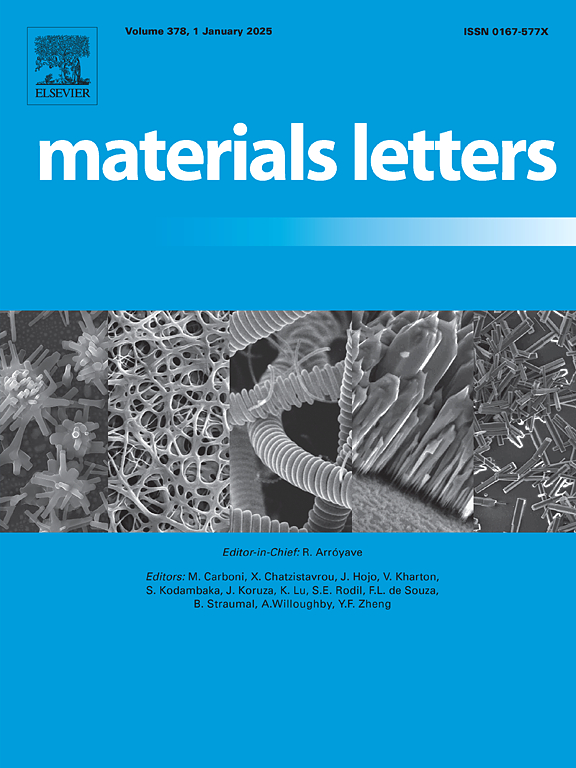Effect of molecular weight and end groups on ionic conductivity of polyester‑based solid‐state electrolytes
IF 2.7
4区 材料科学
Q3 MATERIALS SCIENCE, MULTIDISCIPLINARY
引用次数: 0
Abstract
Aliphatic polyesters have emerged as a promising host polymer in lithium‐ion solid‐state electrolytes due to their appropriate coordination strength between carbonyl oxygen active sites and Li+, and high ion transference numbers. However, the effects of polyester molecular weight and end groups on ionic conductivity of polymer solid‐state electrolytes have been less studied. In this work, poly (hexamethylene succinate) (PHS) with various molecular weights and PHS‐based electrolytes with 30 wt% bis(trifluoromethane)‐sulfonimide lithium salt (LiTFSI) were prepared. From Raman spectra, PHS/LiTFSI with more end carboxyl groups of 5.3 × 10-5 mol/g had the highest LiTFSI dissociation rate up to 68.8 % at room temperature, due to the strong binding between end carboxyl groups and Li+. Both the glass transition temperature and crystallinity of PHS/LiTFSI exhibited a characteristic convex profile with minimum values occurring at − 48.1°C and 8.32 %. It is suggested that more amorphous regions dilute the Li+ concentration which weakens the interactions of ions and polymer segments and restricts chain mobility. The ionic conductivity from electrochemical impedance spectroscopy confirmed that the relationship between molecular weight and ionic conductivity followed the fractional linear function, indicating the importance of tailoring solvation capacity and the dominant ion transport mechanism.
分子量和端基对聚酯基固态电解质离子电导率的影响
脂肪族聚酯由于其在羰基氧活性位点和Li+之间具有合适的配位强度和高的离子转移数而成为锂离子固态电解质中很有前途的宿主聚合物。然而,聚酯分子量和端基对聚合物固态电解质离子电导率的影响研究较少。本文制备了具有不同分子量的聚琥珀酸六亚乙烯酯(PHS)和含有30%三氟甲烷磺酰亚胺锂盐(LiTFSI)的PHS基电解质。从拉曼光谱上看,端羧基较多的PHS/LiTFSI在室温下的解离率最高,达68.8%,这是由于端羧基与Li+之间的强结合。PHS/LiTFSI的玻璃化转变温度和结晶度均表现为典型的凸形,最小值分别出现在- 48.1℃和8.32%。结果表明,非晶态区域的增多会稀释Li+的浓度,从而削弱离子与聚合物段的相互作用,限制聚合物链的迁移率。电化学阻抗谱的离子电导率证实了分子量与离子电导率的关系遵循分数阶线性函数,说明了裁剪溶剂化能力的重要性和主导的离子传输机制。
本文章由计算机程序翻译,如有差异,请以英文原文为准。
求助全文
约1分钟内获得全文
求助全文
来源期刊

Materials Letters
工程技术-材料科学:综合
CiteScore
5.60
自引率
3.30%
发文量
1948
审稿时长
50 days
期刊介绍:
Materials Letters has an open access mirror journal Materials Letters: X, sharing the same aims and scope, editorial team, submission system and rigorous peer review.
Materials Letters is dedicated to publishing novel, cutting edge reports of broad interest to the materials community. The journal provides a forum for materials scientists and engineers, physicists, and chemists to rapidly communicate on the most important topics in the field of materials.
Contributions include, but are not limited to, a variety of topics such as:
• Materials - Metals and alloys, amorphous solids, ceramics, composites, polymers, semiconductors
• Applications - Structural, opto-electronic, magnetic, medical, MEMS, sensors, smart
• Characterization - Analytical, microscopy, scanning probes, nanoscopic, optical, electrical, magnetic, acoustic, spectroscopic, diffraction
• Novel Materials - Micro and nanostructures (nanowires, nanotubes, nanoparticles), nanocomposites, thin films, superlattices, quantum dots.
• Processing - Crystal growth, thin film processing, sol-gel processing, mechanical processing, assembly, nanocrystalline processing.
• Properties - Mechanical, magnetic, optical, electrical, ferroelectric, thermal, interfacial, transport, thermodynamic
• Synthesis - Quenching, solid state, solidification, solution synthesis, vapor deposition, high pressure, explosive
 求助内容:
求助内容: 应助结果提醒方式:
应助结果提醒方式:


